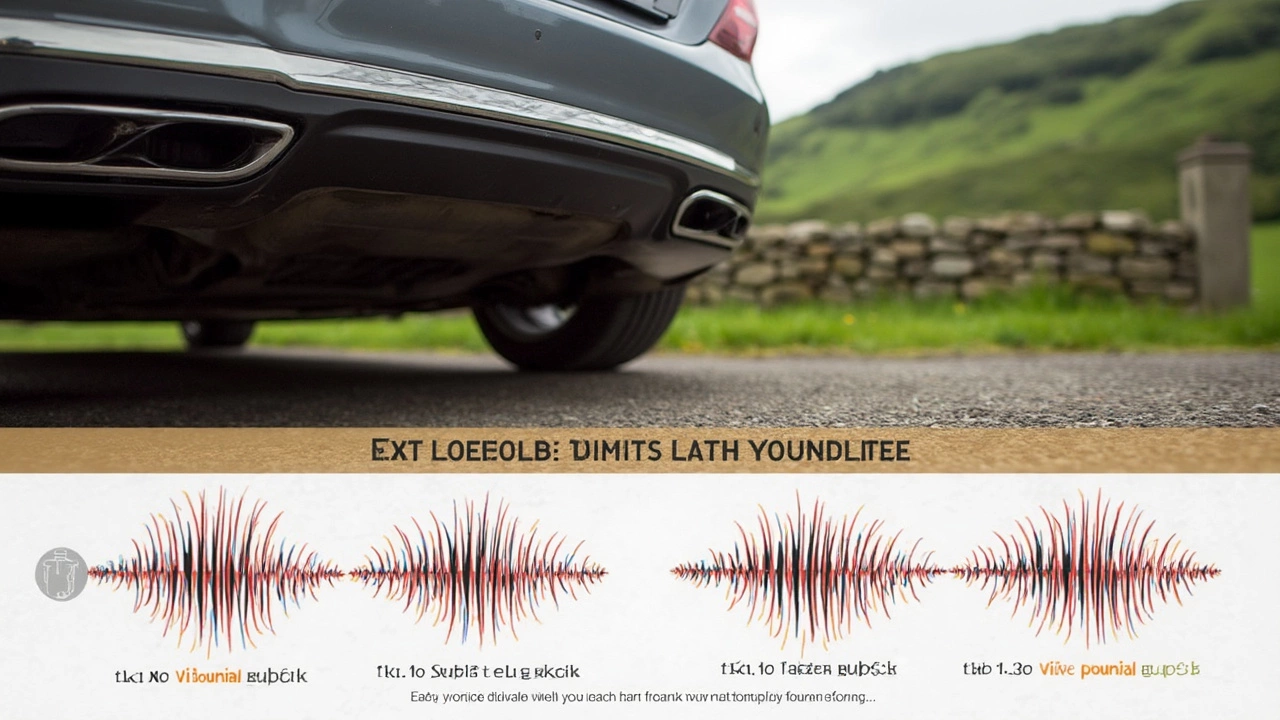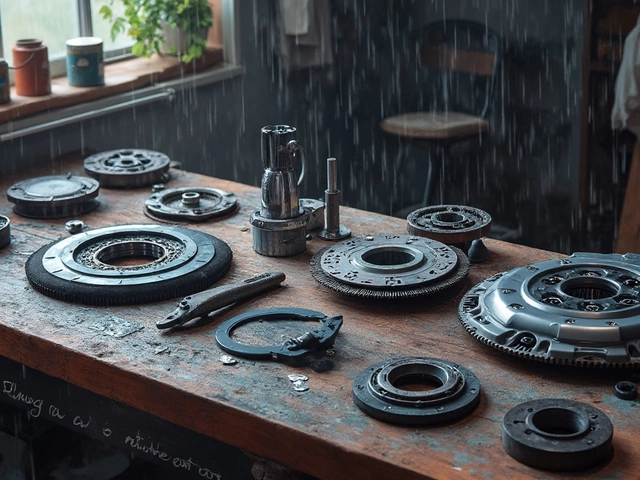If you’ve ever been stuck at a red light next to a car that rattles your windows, you’ve probably wondered what’s under the hood—or, more importantly, under the body. People talk about catback and axle back exhaust mods all the time, but which one really makes more noise?
The quick answer: catback exhaust systems are usually louder than axle backs. That’s because a catback replaces more of your car’s stock exhaust, not just the back section. You get more piping, sometimes less restriction, and yeah, a much bigger sound difference. But that’s not the only thing to consider. Not all loudness is created equal—there’s tone, volume, and even where the sound hits inside and outside the car.
If you plan to upgrade for sound, it’s pretty important to know what you’re after. Go too wild and your neighbors (or local cops) might give you the stink eye every morning. Go too quiet and that extra cash might not reward you with the excitement you want every drive. Let’s break down what makes these two mods tick—and which one is going shake your garage or just give it a subtle purr.
- Quick Breakdown: Catback and Axle Back Explained
- What Impacts Exhaust Loudness?
- Real-World Sound Differences
- Performance and Cost: More Than Just Noise
- Street Legality and Annoyance Factor
- Choosing What’s Right for You
Quick Breakdown: Catback and Axle Back Explained
Before you even talk about how loud these systems can get, you gotta know what we’re actually dealing with. Let’s make it simple. Both catback and axle back exhausts are aftermarket parts folks add to their cars, but they’re not the same in what they replace or how much they cost.
A catback system swaps out everything from the catalytic converter to the tip of your tailpipe. That means new mid-pipes, mufflers, and the tailpipe itself all come in the box. Since it replaces a big chunk of the stock exhaust, it not only changes the sound but can also tweak the airflow and sometimes even improve performance a bit, especially if the stock pipes were pretty restrictive.
On the flip side, an axle back only replaces the exhaust pipes and mufflers behind your rear axle—just the last section of the exhaust setup. You keep your original mid-pipe and catalytic converter. It’s cheaper, simpler to install, and usually doesn’t do much for horsepower but can still give you a nice sound boost compared to your stock muffler.
Most car owners go for axle backs if they want a better exhaust note without spending a lot or dealing with complicated installation. Catbacks cost more and can be a half-day’s project in the driveway, but you’ll definitely know when you’ve changed one out—both in sound and on the throttle.
- Catback: replaces system from catalytic converter back; includes more piping and usually new mufflers
- Axle back: swaps just the section after the rear axle; mainly the mufflers and tailpipe
- Catbacks often add more sound and sometimes more power; axle backs focus on sound only
- Installation time and cost is higher for catbacks
If your main question is which mod will turn more heads, the clear difference is in how much exhaust you’re swapping out. The more you change, the more your ride will stand out on the street—both for the sound and, sometimes, for the performance bump.
What Impacts Exhaust Loudness?
Everyone wants a good sound from their car, but not everyone realizes why one ride sounds like a beast and the next is barely audible. When it comes to loudness, it’s not just about swapping parts—it’s about what those parts actually do.
The biggest factors that impact exhaust loudness include:
- Catback vs. axle back setup: Catback systems swap everything from the catalytic converter to the tailpipe, so they open up airflow and sound more.
- Muffler type and size: Larger, straight-through mufflers are less restrictive and usually give a deeper, louder tone. Chambered mufflers dampen a lot of noise.
- Piping diameter: Bigger pipes mean more air and noise can blast out, which cranks up the volume. Too big, though, and you can lose low-end power.
- Material: Stainless steel keeps things raspy and higher pitched, while aluminized steel can knock down some of the shriek.
- Resonators: These are sound-canceling chambers. If your system deletes or shrinks them, the sound gets louder and a bit more raw.
- Engine size and type: A bigger engine is always going to produce more sound, especially on a V8 versus a four-cylinder.
Here’s a quick comparison of some main factors that affect exhaust noise levels for both setups:
| Factor | Catback | Axle Back |
|---|---|---|
| Muffler Style | Usually sport-oriented, less restrictive | Often keeps stock-style or mild upgrade |
| Piping Changes | Full section replaced plus wider piping | Only the rear-most piping swapped |
| Resonators | Might be removed or swapped | Usually remain original |
| Typical Decibel Gain | 8-15 dB increase | 4-8 dB increase |
Decibels (dB) don’t lie—a 10 dB jump actually sounds twice as loud to your ears. So even a small bump on paper can feel like a ton once you’re on the throttle.
If you want a tip from someone who’s woken up to a neighbor’s cold start more than once, pay attention to muffler choices more than you think—straight through equals more noise every time. Toss in a resonator delete and you might even set off a car alarm or two down the block.
Real-World Sound Differences
So, what actually happens when you swap your stock exhaust for an axle back or a catback? It’s not just about numbers on paper—the difference is obvious to your ears and even your neighbors. Here’s how the sound stacks up in the real world.
The catback system, because it replaces everything from the catalytic converter back, usually makes your car noticeably louder. You get a deeper, throatier sound at idle and a much meaner growl when you get on the throttle. Compare this to the axle back, which only replaces the parts from the rear axle to the exhaust tip. Axle back systems give you some extra volume and a bit more punch, but most of the noise increase comes from just the muffler and sometimes the tips. It won’t shake windows like a catback but gives you enough bark to turn some heads at a stoplight.
If you look up decibel readings, most stock systems hover around 65-70 dB at idle. A typical axle back bumps that up by about 5-10 dB, depending on the model. Catbacks often ramp up the volume by 10-20 dB, especially on cars with turbocharged engines or from brands known for aggressive sound profiles like Borla or Flowmaster.
| System Type | Idle Volume (dB) | Rev Volume (dB) |
|---|---|---|
| Stock Exhaust | 65-70 | 75-80 |
| Axle Back | 70-80 | 85-90 |
| Catback | 75-85 | 90-100+ |
One thing most people don’t realize: sound quality changes, too. Catbacks tend to give a richer, cleaner tone because you’re swapping more of the old piping. You’ll likely avoid harsh rasp or weird drone inside the cabin if you choose the right brand. Axle backs can sometimes give a metallic or hollow note, especially on smaller engines.
Another real-world tip? Don’t just listen to sound clips online—those can be misleading due to microphones and editing. The best move is to check out cars in person, ask owners, or even see if a local shop will let you hear different setups. Every engine (and even each model year) reacts differently with the same exhaust swap.

Performance and Cost: More Than Just Noise
It’s easy to get caught up in just how loud your ride sounds after a new exhaust mod, but there’s more going on under there than just decibels. Swapping from stock to either a catback or axle back can actually change how your car feels when you drive. But here’s the deal—catback systems almost always promise more real performance gains over axle backs, and they hit your wallet harder too.
Let’s break it down. Catback setups swap out everything from the catalytic converter back. That means you’re ditching not just the muffler, but all that mid-piping too. Usually, these systems boost airflow, reduce back pressure, and, on turbo cars, can even help the turbo spool faster. On a naturally aspirated car, you might see a modest bump—think 5–15 extra horsepower if you’re lucky and combine it with a good tune. Turbo rides sometimes get even bigger jumps with the right bolt-ons.
Axle back systems are a lot simpler. They replace the rear section after the axle, mostly just the muffler and exhaust tips. You still get some sound and maybe a tiny bit of weight savings, but they're not designed to really change how much air your engine breathes. If you’re all about performance, catback is usually the smarter upgrade.
Now for the money talk. Catback exhausts aren’t cheap. We’re talking anywhere from $500 on the low end to $2,000 or more for name-brand stainless steel kits. Axle backs can be half that, sometimes even less for basic options. Installation costs for both aren’t trivial either—unless you’ve got good tools and a buddy who owes you a favor.
When you’re picking an upgrade, think about what you care about most. Want that louder catback sound and a shot of extra horsepower? Be ready to shell out, and make sure you don’t skimp on quality—cheap steel rusts fast. If you just want to turn some heads without breaking the bank, an axle back might be the way to go.
Street Legality and Annoyance Factor
This is where you need to pay attention—having a loud exhaust can be fun until you rack up tickets or get dirty looks from every neighbor on the block. Laws about how loud your car can be are pretty strict in lots of states. For example, California sets the legal limit for aftermarket exhaust noise at 95 decibels. New York dropped their limit all the way down to 60 decibels for passenger cars idling in 2022. If you’re running a modded catback or axle back, you could blow right past these numbers.
Here’s how catback and axle back systems shake out when it comes to legal hassles and street reputation:
- Catback systems usually push your noise levels higher since they replace most of the exhaust system from the catalytic converter to the tips. Installing one can easily get you in trouble if your area measures car noise with sound meters during inspections or on random stops.
- Axle back systems are often a little quieter since they just replace the rear-most part (the mufflers and tips). You might slip under the radar, but don’t bet on it—the wrong setup can still be too loud for the law.
If you want hard numbers, check this out:
| State | Max Legal dB (Car) | Exhaust Check Strictness |
|---|---|---|
| California | 95 | Very Strict |
| New York | 60 (idling) | Strict for loud mods |
| Texas | No statewide limit (local rules vary) | Moderate |
| Florida | 95 | Moderate |
| Illinois | 75 (urban area) | Strict in cities |
On top of legal problems, there’s straight-up daily annoyance. Even if you stay under the legal limit, that deep rumble or snap-crackle-pop can get old fast for roommates, family, or your dog (Rufus hates loud cold-starts). If you park in a quiet neighborhood or leave early for work, expect some complaints or dirty looks.
Here’s a tip: Before dropping cash on a catback or axle back, listen to sound clips of the exact system on your specific car model. A system that’s bearable on one car can be obnoxious on another. Also, smaller towns and HOAs can be way pickier about noise, so don’t just check state laws—ask around your area too.
Choosing What’s Right for You
Now for the good stuff—how do you actually decide between a catback and an axle back exhaust? It really boils down to what you want out of the upgrade, your budget, and how much noise you can actually get away with where you live.
If your main goal is the loudest possible sound and a good shot at some extra horsepower, a catback system usually wins. It replaces everything from the catalytic converter back, which opens up the airflow a lot more. The wider pipes mean more thunder from your tailpipes and a noticeable bump in performance. Catbacks can add 5-15 horsepower depending on your car, plus a much deeper tone. Just keep in mind: more parts mean a higher price tag and a longer install.
If you’re on a budget, or you really like your neighbors (or want to keep your warranty safe), axle backs are a solid call. They swap out just the mufflers and a bit of pipe at the rear. You’ll still get a richer, slightly louder tone, but without rattling your teeth or risking a ticket from the local cops.
Here’s a quick comparison to help narrow it down:
| Feature | Catback | Axle Back |
|---|---|---|
| Average Price | $400–$1,200 | $250–$700 |
| Install Time | 2–3 hours | 1–2 hours |
| Sound Level | High/Loud | Moderate |
| Performance Gain | 5–15 hp | 1–5 hp |
| Legal Issues | Sometimes | Rarely |
If you’re stuck, ask yourself a few questions:
- How much do I want to spend?
- Am I looking for just a nicer sound, or more power too?
- Do I drive in a stricter area with noise laws?
- How DIY are you—are you comfortable under a car, or do you plan to pay a shop?
If you mostly drive city streets with strict rules, go axle back. If you’re chasing more power, or you want that full-on sporty rumble every time you start up the car, go catback. And whatever you pick, do what I do—double-check reviews for your exact make and model. Some combos sound awesome, others just drone on the highway or annoy the dog (trust me, Rufus is not a fan of the really loud setups).






